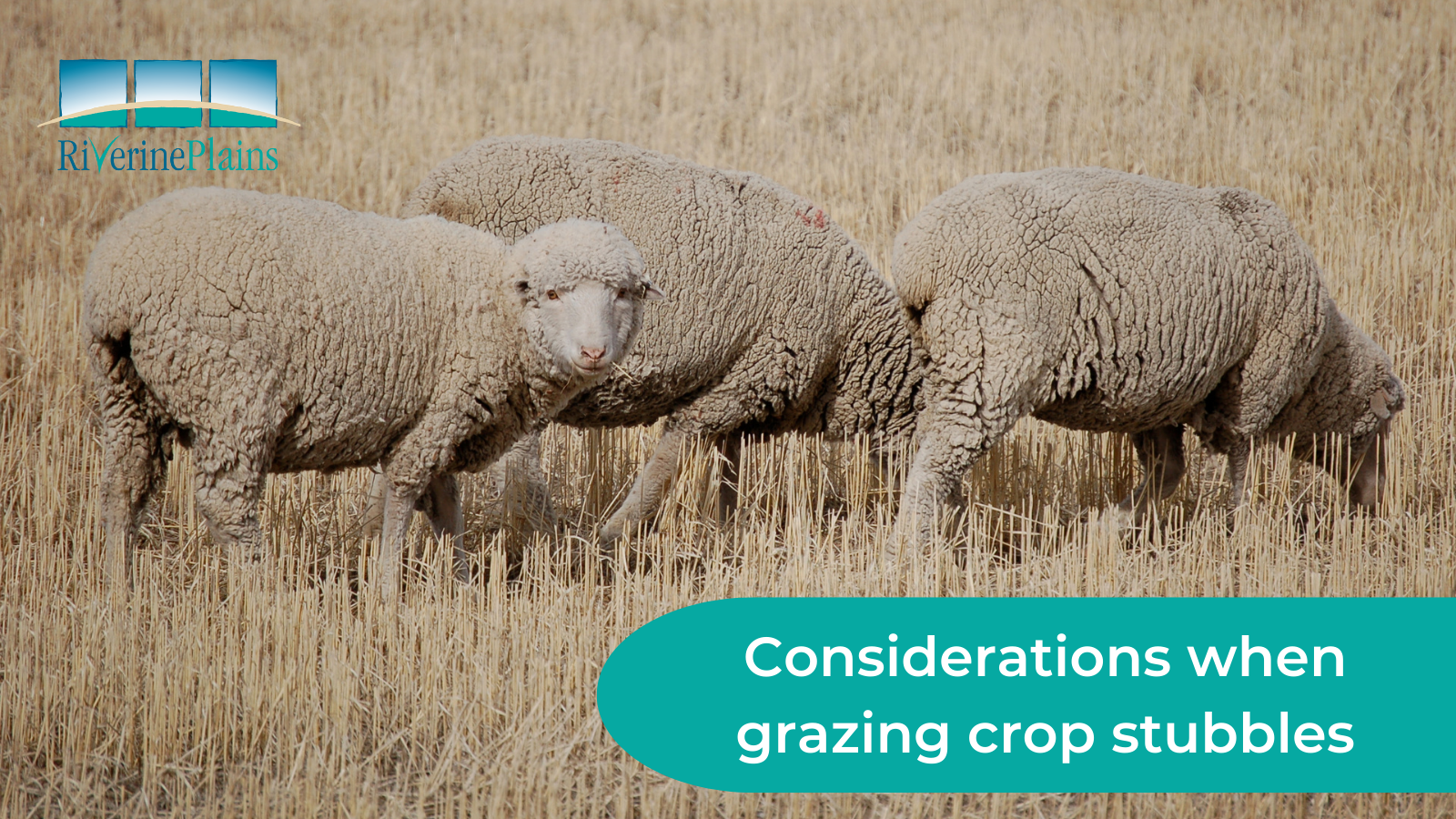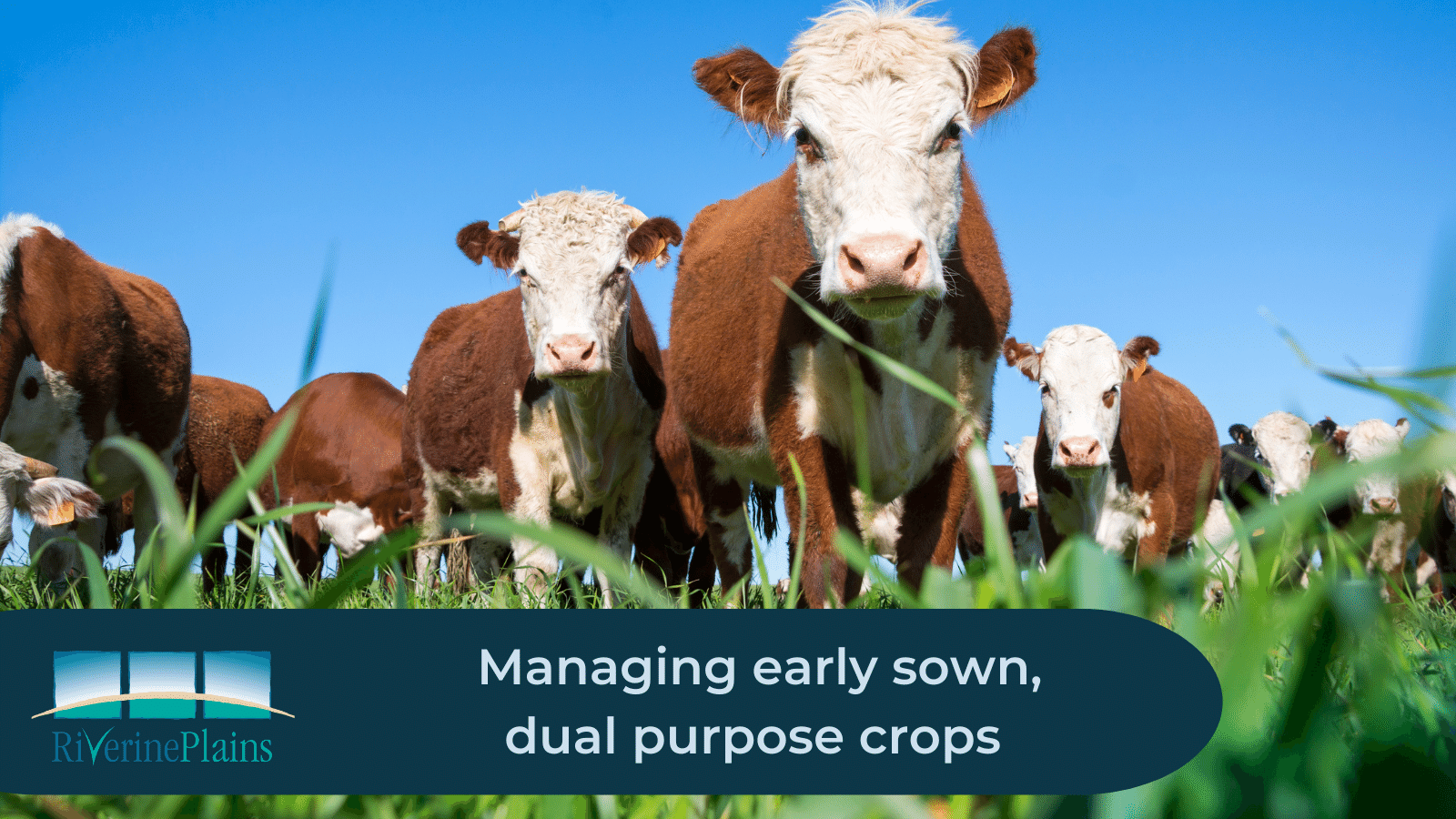Grazing stubbles - key considerations

Key points
- The main feed value of stubbles is in the residual grain
- When grazing, aim for a minimum 70% ground cover to prevent soil degradation
- Feed quality of stubble and chaff varies, so ensure alternative feed sources meet nutritional requirements
With un-harvestable paddocks, weeds and volunteer crop growth likely over the coming months, producers may be looking to graze their stubbles to maximise returns from both the livestock and cropping operations.
Stubble grazing benefits
Stubble is a valuable source of feed for livestock. Stubble grazing reduces the stubble load and trampling by livestock improves the residue breakdown by increasing straw-to-soil contact. Grazing is also a tool to manage non-toxic weeds and early volunteer plant growth.
Grazing stubbles can increase nutrient availability for following crops, by redistributing nutrients across the paddock (urine and manure). It can reduce nitrogen tie-up in young crops by decreasing the amount of carbon-rich stubble left on the soil surface to break down.
Removing grain residues from paddocks also reduces the risk of pests (mice, birds etc).
Overgrazing and compaction
It is important to manage grazing to ensure there is enough stubble to protect the soil surface from wind and water erosion. Aim for a minimum of 70 % ground cover (about 2-3 t/ha stubble).
While it’s often assumed that grazing stubbles can lead to compaction issues and excess water runoff, any compaction from grazing stubbles is usually shallow or light and is removed by the sowing process. Instead, overgrazing leads to the removal of plant cover, reducing the amount of water that infiltrates the soil surface.
Grazing stubble with high stocking rates for short periods of time (rotational grazing) is preferred over set stocking for long periods. This is because set stocking often results in uneven paddock utilisation and overgrazing around water points and camps, leading to erosion and soil degradation.
Feed value
Crop stubbles are highly variable in their feed value. Most of the feed value in stubbles usually comes from grain left in the paddock after harvest; this means that stubbles often start out as high quality but reduces quickly as sheep clean up the grain.
Grains and young green plants have a higher proportion of digestible carbohydrates and protein, so they generally have a higher nutritive value. Leaf and fine stem are low quality but generally edible, making up roughly half of the energy from dry stubbles.
Ripe wheat stems, which make up a large component of stubbles, have a high proportion of structural carbohydrates that are poorly digestible, making them lower in nutritive value (little is usually eaten).
It’s important to consider that ewes usually graze stubbles during mating and early pregnancy, when access to high quality feed is critical. Given the overall low quality of stubble and chaff, farmers need to ensure higher quality feeds (grain residues, green pick, supplementary feed) are available to meet their nutritional requirements and maintain or increase livestock condition.
The best way to measure feed value is through a feed test (this will determine metabolisable energy and protein content). The Modern Stubbles project has developed a stubble grazing calculator. This is an excel-based tool for producers to enter stubble grazing scenarios to predict likely liveweight gain and is available at https://www.wool.com/land/pastures/stubbles/.
A lack of green feed can result in vitamin deficiency; if concerned, consider a Vitamin A, D and E drench or injection. Monitor for acidosis; spread out grain piles left after harvest to reduce the risk and ensure stock have access to a clean source of water (sheep require 3–5L per sheep/per day to graze stubbles, with more during hot weather).
Moulds and Toxins
Wet conditions can cause mould growth, which can be toxic to sheep. Monitor and test suspect grains, hay, stubbles and pastures and monitor livestock for the impacts of mycotoxins.
If considering grazing lupin stubbles, or feeding lupin grain, test for the Phomopsis fungi as the risk is increased in years with late season rain (or hail).
Always adhere to grazing restrictions on stubble from crops treated with pesticides.
Further Reading & Resources
https://www.mla.com.au/news-and-events/industry-news/five-tips-for-grazing-sheep-on-stubbles/


